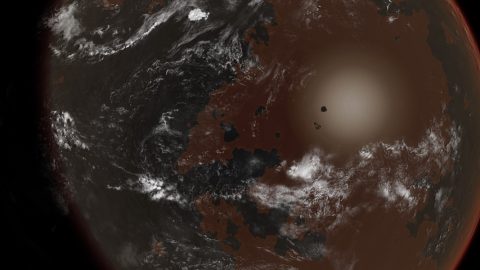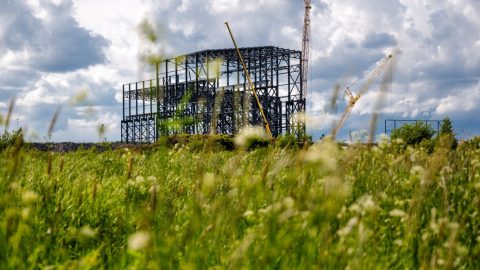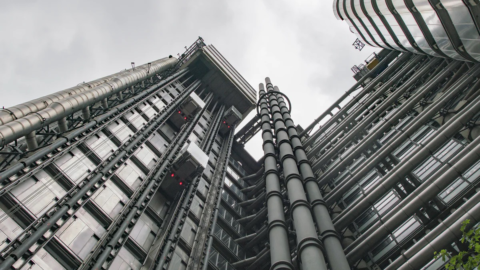This episode, we’re doing something a little bit different. Join us as we take a trip to a Californian vineyard to learn about how it’s deploying sensors and other forms of AI.
We meet:
Dirk Heuvel, vice president of vineyard operations, McManis Family Vineyards
Credits:
This episode was produced by Jennifer Strong with help from Anthony Green and Emma Cillekens. It was edited by Mat Honan and mixed by Garret Lang, with original music from Jacob Gorski. Art direction by Stephanie Arnett.
Full transcript:
[TR ID]
Jennifer: Hi there. It’s Jennifer Strong and I have something a little bit different this week.
We’re in the middle of making another miniseries… and this time I’m looking at how farming operations are using AI to more precisely grow food… with help from machine vision, satellites, and incredible quantities of data.
So I’ve been spending a lot of time talking to farmers and agricultural tech workers who are building and experimenting with these tools…and in the weeks ahead? We’re going to introduce you to some of them… including folks working in Ukraine… trying to optimize crops and minimize food shortages… while being in the middle of a war zone.
Something really interesting from this reporting – food producers who adopt this tech appear to be using much less water… and way fewer chemicals. These advances make it possible to only spray when it’s needed.
So, to kick things off, here’s a tour of a vineyard in California’s central valley…and as always… we’d love to hear what you think. Please drop a note to podcasts at technology review dot com… or you can find me on twitter at Strong Reporter.
Dirk Heuvel: So this variety we’re looking at here is called Pinot Grigio.
Pinot Grigio actually makes a white wine and it’s won a few varieties in California that, uh, is a pretty common variety that actually we make purple grapes that make a white wine. So my name is Dirk Heuvel and I’m the VP of vineyard operations here at McManis family vineyards.
My family actually kind of set roots here, actually farming almonds. And some people say almonds, we say in Ripon, and we say, say, almonds.
I feel like, if it was like my dad or my grandpa trying to adopt this technology, absolutely. I think there’d be a huge culture shock there for them. I still think they don’t quite understand it, but they’re seeing the results of it. So I think that’s the most important thing—that we’re able to show them that it is working and how it’s working for us.
I will say today, I feel that we’re growing better quality grapes than we were 30 years ago. Just adapting a lot of this aerial imagery, modern irrigation technology, running drip system technology, you know, being able to fertilize through drip systems. And you can actually look at the imaging on your phone and you can actually pinpoint go out and walk to a specific vine. You know, that might be a vine that died, that shows up on the aerial imaging. You can use the technology and, and walk right into a specific area. Just being able to identify areas, you know, using GPS. We can have field checkers go through the field now and on their app, they’re able to actually drop and pinpoint where we might have mite issues where we might have, you know, leafhopper issues, areas that need to get treated. And that actually allows us to go through and just cite specific treat. Instead of treating an entire vineyard block, we’re able to just treat specific areas.
Jennifer: It was only what like five, seven years ago, it was half of farm workers weren’t using smartphones.
Dirk Heuvel: Yeah.
Jennifer: So, if people are dropping pins that’s…
Dirk Heuvel: Yeah. You know, 30 years ago, in order to make a phone call, you’d have to drive in a, in a town or go to your house to call your irrigator to do stuff. And now it’s, this is almost, it’s like real time farming. Now we can make decisions on the fly. And one of the big advantages to using variable rate applications is that you’re only applying the amount of nutrients or amendments that are needed for a specific area. So before we adapted this variable rate technology, we would drive down a row and we would put a consistent amount of amendments, whether it be gypsum, lime, soil, sulfur, we would apply that amount evenly throughout the entire vineyard block. Now we realize going through and using this variable rate technology is that we might cut the, the amendments that are needed by 20 to 30% on a specific vineyard block, just by applying the correct amounts of nutrients where they’re needed and not overlying where they’re not needed
In the past, probably five to six years, we started using a lot more compost on our vineyards. Our big push to using compost was the slow release of nutrients that we got. We also use the variable rate technology for that, just to help build the organic matter in the soils. California water is a commodity here for us and the compost actually helps retain soil moisture and actually makes the soil moisture that you are applying more readily available to the plants.
Jennifer: That these things could work together. It’s kind of cool.
Dirk Heuvel: Yeah. And that’s, you know, when we first started using Ceres Imaging, it was kind of a tool that was there for you to identify water stress in vines. And I kind of took that mapping and said, Hey, you know, there’s a lot of correlations here between our water stress and what our soil type is. And, you know, you start changing soil types. You’re gonna change the way that those plants actually uptake nutrients and water, you know, heavier soils. They need to pull a lot harder to get those nutrients and the water up into the vine compared to, like, a sandier soil, which makes it a little bit more available to the plant.
One of the things we’ve noticed, sometimes you can see things that are happening in the vineyard before you can actually physically see it with your naked eye up in person. So we saw water stress in the vineyards, through the aerial imagery and walked out into the field. You couldn’t see it, but about a week to two weeks later, it was visibly noticeable in person.
So, I guess what these tools, this technology did for modern agriculture was just made it economically feasible for a grower to go through and, and do this kind of work. Before a grower would have to go out and pull five or six samples per acre, just wouldn’t be possible doing it that way. It would cost you more to do that than what, what you would actually make on the crop that year. So, um, by spending, you know, anywhere from 10 to $15 an acre to create a prescriptive map throughout the field, and it’s, you know, something that you might even identify, things like inefficiencies within your irrigation system that you didn’t know were there, you know, you might take this aerial imagery and realize that it’s, you don’t have any nutritional issues at all. It’s an irrigation uniformity issue.
Jennifer: We leave the fields and head over to the bottling plant…
Dirk Heuvel: Basically, they’re just doing maintenance on the equipment right now.
Jennifer: It smells wonderful in here
Dirk Heuvel: It smells like wine, yes.
That’s the, the last of the bottles going through the line right there. This is what we call it, case packer. So it actually grabs, uh, 24 bottles and it loads two cases at one time. There’s a lot of technology in here that’s similar to, like, dairies. Like the automated milking system in dairies. There’s a lot of things in here. As far as the robotics go that are the same here as what they use in that industry.
So the company that makes, like, the bottling line, they’re based out of Italy and their IT team can actually log in from Italy. If we have something go down inside the line, they’ll troubleshoot it. And aside from physically fixing it for you, they can tell you what’s, what’s wrong with it.
Jennifer: Kinda amazing. All the tanks out here,
Dirk Heuvel: We just did a pretty good size expansion. We did, uh, just, just over 2 million gallon expansion on the facility out here, kind of getting the facility, everything cleaned up and ready for harvest, kind of doing some last minute maintenance on everything and just getting ready.
–
Jennifer: You can find links to our reporting in the show notes… and you can support our journalism by going to tech review dot com slash subscribe.
We’ll be back… right after this.
[MIDROLL]
Jennifer: This episode was produced by me with Anthony Green and Emma Cillekens. It was edited by Mat Honan and mixed by Garret Lang… with original music from Jacob Gorski.
Thanks so much for listening… I’m Jennifer Strong.
[TR ID]





Recent Comments